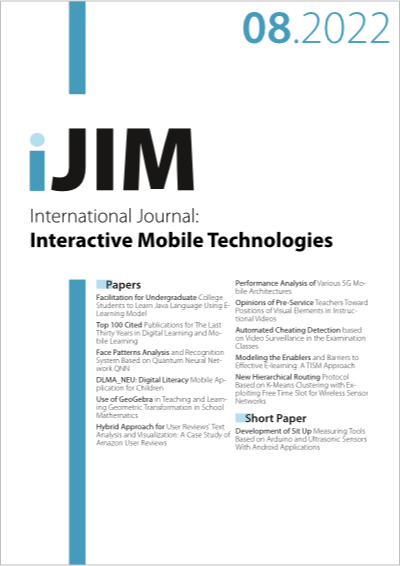Performance Analysis of Various 5G Mobile Architectures
DOI:
https://doi.org/10.3991/ijim.v16i08.29003Keywords:
5G Communication, mm Waves, Beam Forming, Stand Alone, Non Stand AloneAbstract
The field of Telecommunication has progressed and emerged to be a successful field of technology. From communicating via pigeons and cannon balls to video conferencing for a meeting, the communication has improved surpassing every user’s expectation. With the introduction of wireless communication, the field of communication took a different turn. Just when we thought we reached the zenith of wireless communication, an esoteric concept of StandAlone (S.A.) and Non-StandAlone (N.S.A.) opened the gates to a more efficient communication, expanding the horizons of technology. The 5G network has started developing over some regions in the world but the real question remains; which is, whether an efficient communication is worth the economy spent on developing it or certain advantages of this networks should be given up to protect the country’s economy.The 3rd Generation Partnership Project (3GPP) presents two essential architecture for 5G deployment from LTE: Non-Standalone (NSA) and Standalone (SA). NSA empowers quick 5G benefit arrangement with minimum investment by leveraging the existing LTE infrastructures. SA comprises of a single Radio Access Technology (RAT), meaning it is conceivable to supply full 5G upgrades designed to work only in the 5G New Radio (NR) This analytical paper elaborates the performance of these two architectures for the implementation of 5G cellular technology, where in the first one would be highly technology centric approach with less cost efficiency and the other one would be the economy savvy aspect with little bit negotiation with technology upgrades
Downloads
Published
How to Cite
Issue
Section
License
Copyright (c) 2022 Jainam Belani, Dr.Komal Borisagar, Yugma Thakore, Nirali Kotak, Bhavin Sedani

This work is licensed under a Creative Commons Attribution 4.0 International License.



